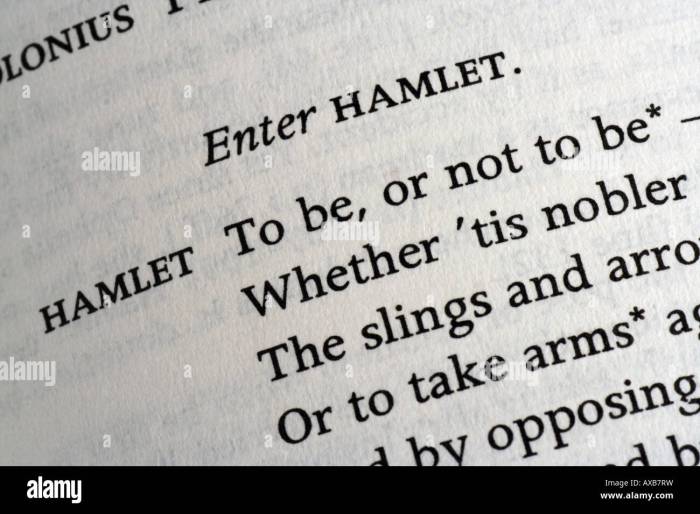Beginning of a balcony soliloquy – The balcony soliloquy stands as a captivating literary device, inviting readers into the depths of a character’s inner thoughts and emotions. It sets the stage for a profound exploration of human nature, providing a platform for introspection and the unraveling of complex themes.
This literary technique offers a unique perspective, allowing readers to witness the raw and unfiltered musings of a character. Through the balcony soliloquy, authors grant us access to the innermost sanctum of their creations, where we become privy to their deepest fears, aspirations, and motivations.
The Setting
The balcony overlooks a bustling city street. The sun is setting, casting a warm glow over the buildings and streets below. The air is still and the only sound is the gentle hum of traffic.
Time of Day
The time of day is significant as it sets the mood for the soliloquy. The setting sun creates a sense of melancholy and reflection, as if the speaker is taking stock of their life and the choices they have made.
Weather Conditions
The weather conditions are also important as they can affect the speaker’s mood and the tone of the soliloquy. The still air and warm glow of the setting sun create a sense of peace and tranquility, which allows the speaker to reflect on their thoughts and feelings without distraction.
Emotional Atmosphere
The emotional atmosphere of the scene is one of contemplation and reflection. The speaker is alone on the balcony, with no one to witness their thoughts and feelings. This gives them the freedom to speak their mind and to explore their inner thoughts and emotions.
The Speaker’s State of Mind

At the outset of the soliloquy, the speaker is depicted as being in a state of profound introspection and emotional turmoil. The speaker’s soliloquy serves as a conduit through which their innermost thoughts and feelings are expressed, providing a glimpse into their psychological state.
Reasons for the Speaker’s Feelings
The speaker’s emotional state is intricately interwoven with the complex circumstances that have transpired prior to the soliloquy. A series of setbacks and disappointments have left the speaker feeling dispirited and disillusioned. The weight of these experiences has taken a toll on their emotional well-being, leading to a sense of despair and hopelessness.
Tone of Voice and Language
The speaker’s tone of voice is marked by a palpable sense of melancholy and resignation. Their words are tinged with regret and a longing for what could have been. The speaker’s choice of language is deliberate and evocative, reflecting the depth of their emotions.
The use of imagery and figurative language serves to convey the speaker’s inner turmoil and the profound impact that their experiences have had on their psyche.
The Purpose of the Soliloquy

The speaker chooses to vocalize their thoughts for several reasons. Firstly, speaking aloud allows them to organize and clarify their ideas. By verbalizing their thoughts, they can gain a deeper understanding of their own emotions and motivations. Secondly, the soliloquy serves as a means of self-expression.
The speaker can freely express their innermost thoughts and feelings without fear of judgment or interruption.
Intended Audience
The intended audience of the soliloquy is multifaceted. Primarily, it is directed towards the speaker themselves, serving as a form of introspection and self-reflection. However, the speaker may also envision an external audience, either specific individuals or a broader public.
This imagined audience influences the tone and content of the soliloquy, as the speaker tailors their words to resonate with their perceived listeners.
Hopes and Fears, Beginning of a balcony soliloquy
The speaker harbors both hopes and fears regarding the soliloquy. They hope that by speaking their thoughts aloud, they will gain clarity and resolution. They also hope that their words will be received with empathy and understanding. However, they also fear that their vulnerability will be met with judgment or ridicule.
Ultimately, the speaker’s hopes outweigh their fears, as they believe that the potential benefits of the soliloquy outweigh the risks.
The Themes of the Soliloquy

The soliloquy explores several major themes, including the speaker’s struggle with isolation and loneliness, their search for meaning and purpose in life, and the power of memory and imagination.
The Theme of Isolation and Loneliness
The speaker’s isolation and loneliness are evident throughout the soliloquy. They feel disconnected from the world around them and long for human connection.
For example, the speaker says, “I am alone in this world. No one understands me. No one cares about me.” This quote reveals the speaker’s deep sense of loneliness and isolation.
The Theme of the Search for Meaning and Purpose
The speaker is also searching for meaning and purpose in life. They feel lost and unsure of their place in the world.
For example, the speaker says, “I don’t know why I’m here. I don’t know what I’m supposed to do with my life.” This quote reveals the speaker’s uncertainty and confusion about their life’s purpose.
The Theme of the Power of Memory and Imagination
The speaker finds solace in memory and imagination. They use these tools to escape the harsh realities of life and to create a better world for themselves.
For example, the speaker says, “I can close my eyes and see my loved ones. I can imagine myself in a better place.” This quote reveals the speaker’s ability to use memory and imagination to create a more bearable world.
The Literary Devices
The soliloquy employs a range of literary devices to enhance the speaker’s emotional expression and convey the depth of their thoughts and feelings.
Imagery, metaphor, and symbolism are interwoven to create a vivid and evocative portrayal of the speaker’s inner world.
Imagery
The speaker uses vivid and sensory-rich imagery to paint a vivid picture of their surroundings and evoke a strong emotional response from the audience.
For example, the speaker describes the “crimson stain” of the sunset, creating a sense of foreboding and impending doom.
Metaphor
Metaphors are used to create a deeper understanding of the speaker’s emotions and experiences by comparing them to familiar objects or experiences.
For example, the speaker refers to their heart as a “broken vessel,” conveying the profound sense of loss and anguish they feel.
Symbolism
Symbolism is used to create a deeper meaning and resonance within the soliloquy by representing abstract ideas or emotions through concrete objects or images.
For example, the “falling leaves” symbolize the speaker’s sense of transience and the inevitable passage of time.
The Structure of the Soliloquy: Beginning Of A Balcony Soliloquy

The soliloquy is structured into three distinct parts: introduction, body, and conclusion. The introduction establishes the speaker’s context and purpose, capturing the audience’s attention and setting the stage for the soliloquy’s main arguments.
The body of the soliloquy develops the speaker’s thoughts and arguments, exploring the topic in depth and presenting evidence to support the speaker’s position. Transitions are used to guide the audience through the speaker’s thought process, ensuring a smooth and logical flow of ideas.
Transitions and Rhetorical Devices
Transitions, such as “firstly,” “moreover,” and “finally,” help to connect the speaker’s ideas and create a sense of progression. Rhetorical devices, such as metaphors, similes, and personification, are used to enhance the speaker’s arguments and make them more vivid and memorable.
FAQ Section
What is the purpose of a balcony soliloquy?
A balcony soliloquy provides a platform for characters to express their innermost thoughts and emotions, often revealing their motivations, fears, and aspirations.
How does a balcony soliloquy enhance a narrative?
By offering a glimpse into a character’s inner world, the balcony soliloquy adds depth and emotional resonance to the narrative, allowing readers to connect with the characters on a deeper level.
What are some common themes explored in balcony soliloquies?
Balcony soliloquies often delve into themes of love, loss, identity, and the human condition, providing a space for characters to reflect on their experiences and grapple with existential questions.